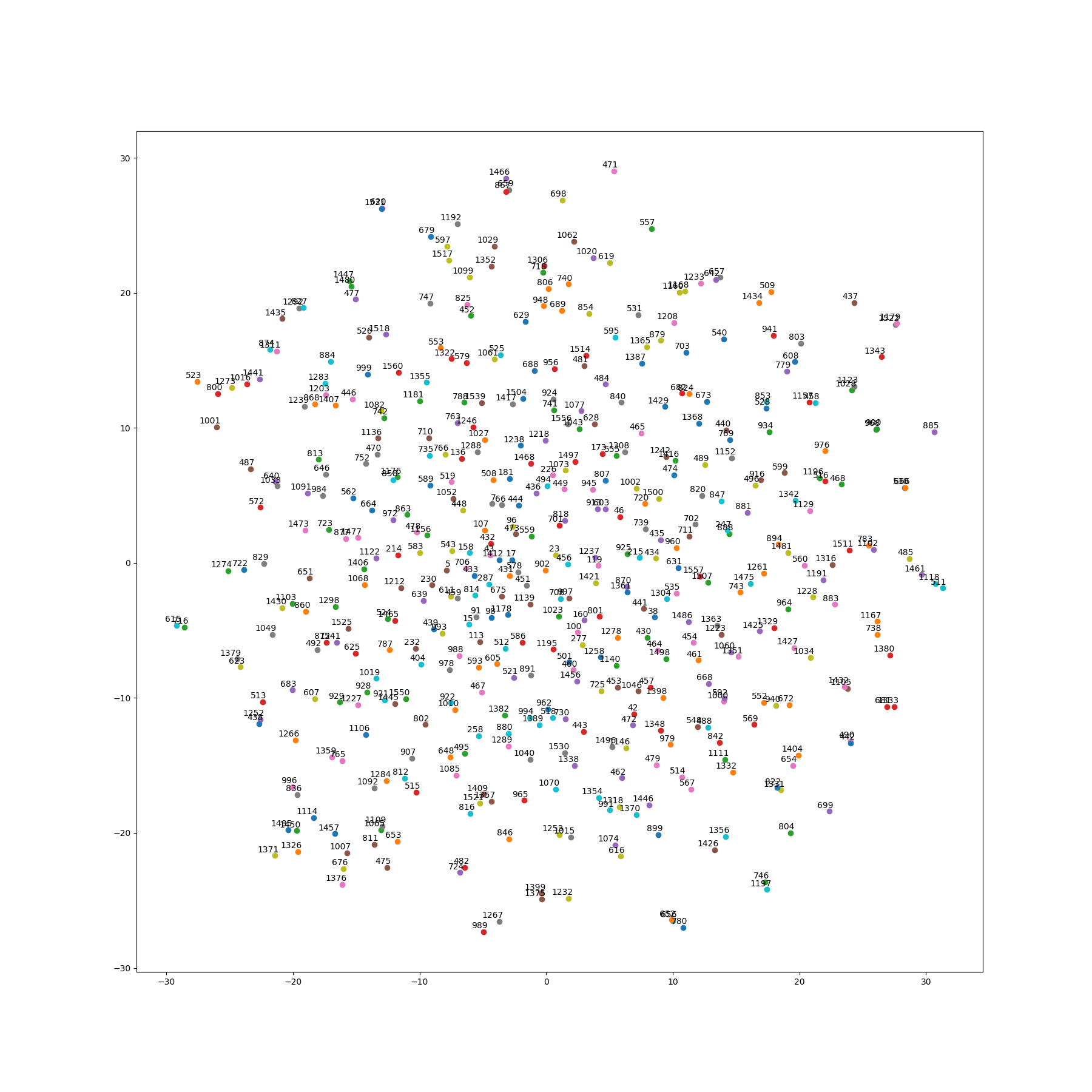This is an implementation of node2vec with tensorflow, based on the original one of aditya-grover and word2vec tutorial of tensorflow. It can deal with graphs with massive number of nodes or densely connected graphs faster.
"Node2Vec is an algorithmic framework for learning continuous feature representations for nodes in networks. In node2vec, we learn a mapping of nodes to a low-dimensional space of features that maximizes the likelihood of preserving network neighborhoods of nodes. We define a flexible notion of a node’s network neighborhood and design a biased random walk procedure, which efficiently explores diverse neighborhoods."
source: node2vec: Scalable Feature Learning for Networks
-- Aditya Grover, Jure Leskovec
sample plot with tsne
The usage is exactly the same as the original one, except for a few changes of hyper parameters for tensorflow.
To run node2vec, execute the following command from the project home directory:
python src/main.py --input ../graph/listed_weight.edgelist --output ../emb/karate.emb
You can check out the other options available to use with node2vec using:
python src/main.py --help
The supported input format is an edgelist:
node1_id_int node2_id_int <weight_float, optional>
The output is different from the original implementation.
The output file has n lines for a graph with n vertices.
The n lines are as follows:
node_id dim1 dim2 ... dimd
--start_learning_rate: The initial learning rate used for training
--end_learning_rate: The end learning rate used for training
--decay_power: how the learning rate decay when the number of iterations increasing (0.01 ~ 10)
--iter: how many iterations used in training (>1)
--batch_size: The batch size of training Word2Vec (>1)
--num_sampled: the number of negative samples used in negative sampling (>1)
